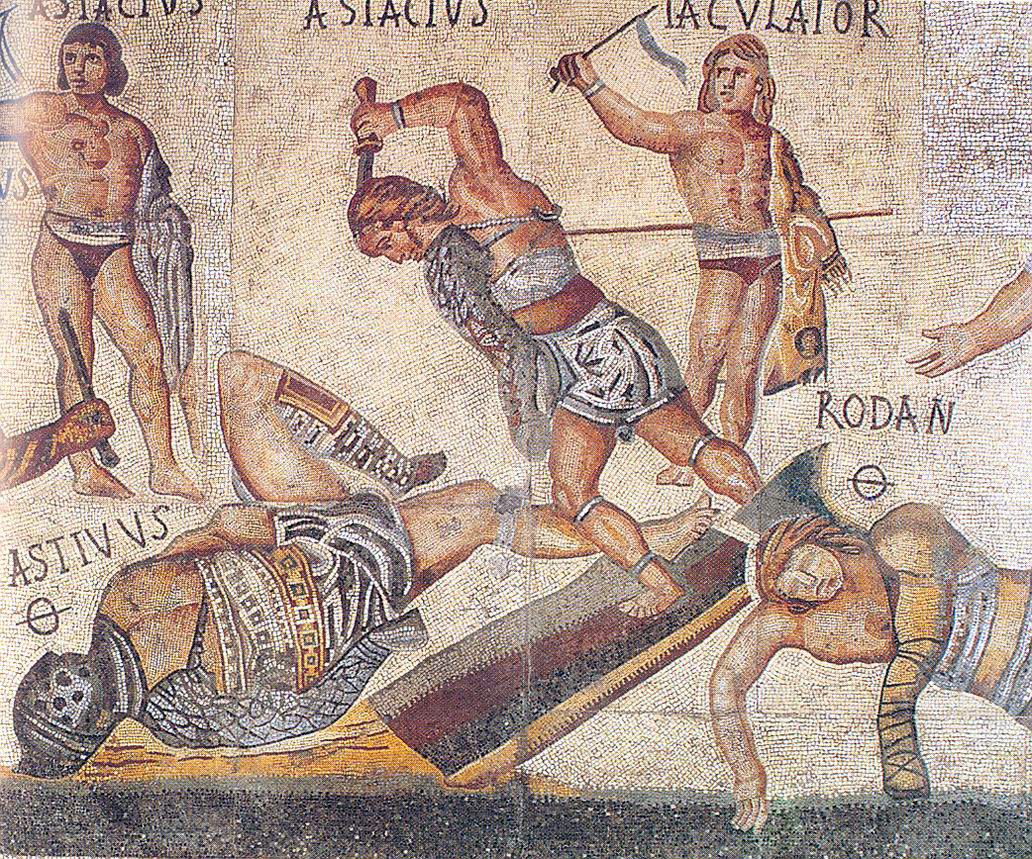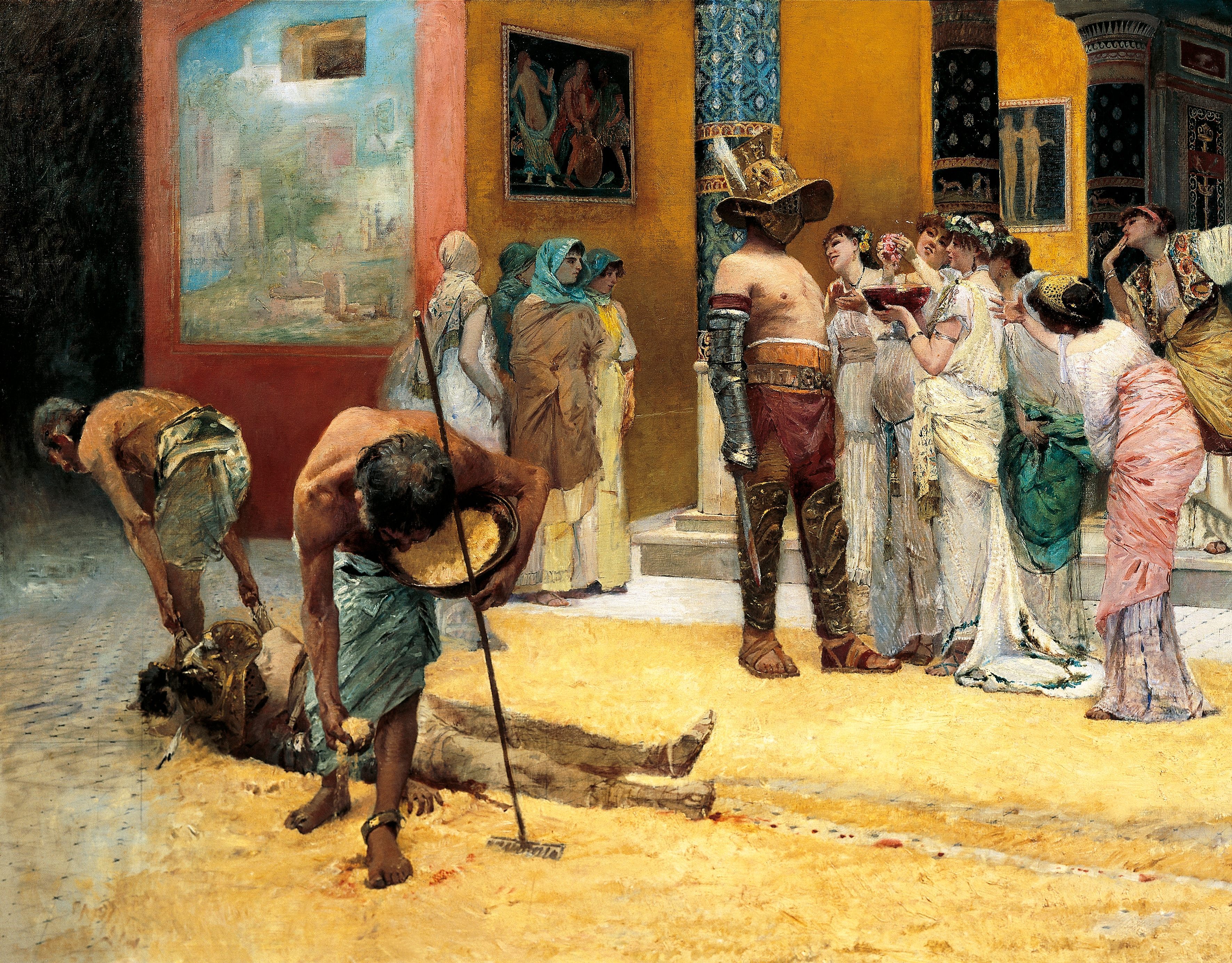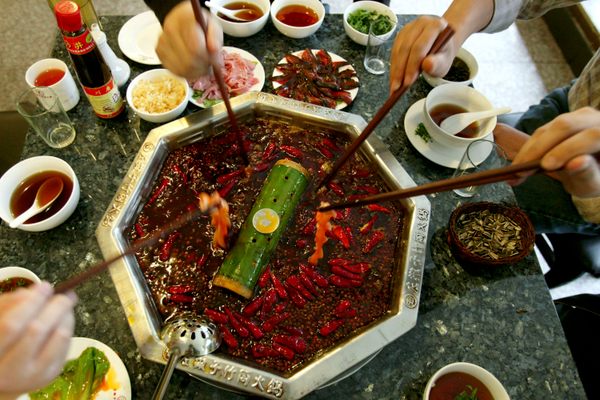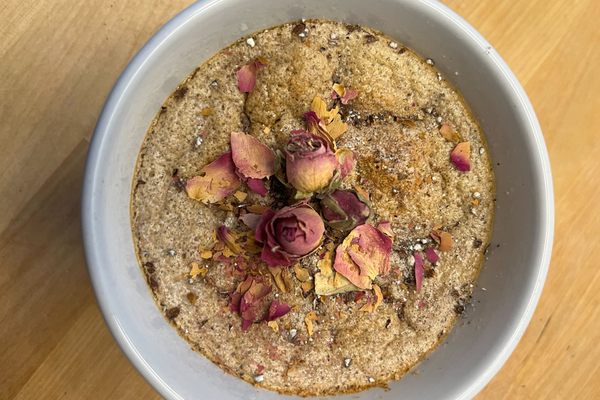Gladiator Diets Were Carb-Heavy, Fattening, and Mostly Vegetarian
To survive the arena, they ate a mash of barley and beans.

What epitomizes the ideal Western male physique more than the Roman gladiator? Rippling with lean muscle, gladiators’ bodies represent corporeal perfection—or so films and television shows such as Gladiator and Spartacus would have us believe.
In reality, what we know about gladiators’ diet and physiques suggests a very different physical appearance than the one depicted in classical art and contemporary popular culture. According to archaeological research, their abdominals and pectorals were likely covered in a quivering layer of subcutaneous fat. Why? The evidence suggests gladiators carbo-loaded. They ate a diet high in carbohydrates, such as barley and beans, and low in animal proteins. Their meals looked nothing like the paleo or meat-and-fish centric diets now associated with elite warriors and athletes.
Current knowledge of gladiators’ physiques comes from a group of medical anthropologists at the Medical University of Vienna and a nearly 2,000-year-old gladiator grave located in what is now Ephesus, Turkey. (When its inhabitants were interred, the area was part of the Roman Empire.) The mass grave houses the bones of 67 gladiators and one female slave, thought to be the spouse of one of the men buried there.

Researchers were able to identify the buried bodies as gladiators through reference to a set of reliefs carved into the marble slabs that marked the grave. These reliefs depict gladiatorial battle scenes and were dedicated to fallen gladiators.
Although none of the 68 skeletons was complete, enough arm and leg bones, as well as skulls and teeth, were preserved for researchers to be able to study and understand the nutritional and medical realities of the men to whom they once belonged. Using a technique called “isotopic analysis,” the team was able to test the skeletal remains for elements including calcium and zinc. This enabled them to partially reconstruct their diets. Based on the elemental mixtures they recovered using the analysis, the team concluded that the bodies in the grave ate few animal proteins and plenty of carb-rich legumes, as well as a healthy dose of calcium. This relatively meat-free diet is described in texts from the time, too: Pliny’s Natural History refers to gladiators by the nickname hordearii, which translates to “barley eaters.”
Interestingly, according to the researchers, gladiators’ primarily vegetarian diet was not a consequence of their poverty or slave status. While it is popularly believed that the ranks of men and women who fought as gladiators were comprised entirely of slaves, that’s only partly true. Though the majority of gladiators were prisoners of war and convicts, some rejoined voluntarily to earn wages after their initial term of conscription had ended. Nonetheless, given this lowly status, one might assume that a carb-heavy, mostly meat-free diet was a cost-cutting measure. After all, why feed prisoners extravagant fare?
Well, you might do it to improve their battlefield performance. The Vienna team posits that the fighters ate weight-gaining foods because extra fat created a layer of bodily protection. Nerve endings would have been less exposed, and bleeding cuts would have been less perilous. As an added benefit, the extra, protective layer of fat would have created a more satisfying spectacle: The gladiators could sustain wounds and gush blood, but, because the wounds were shallow, they could keep on fighting.

Harvard Classics Professor Kathleen Coleman, who is unaffiliated with the University of Vienna team, agrees with the notion that the gladiator diet was carefully considered. Since everyone wanted the best possible fight, she says, “I assume that they knew about the link between diet and performance [and] they certainly wanted to fatten gladiators up.” Even if the fare wasn’t a cost-cutting measure, though, “the ancient sources sneered at the gladiator’s ‘mash,’ as they called it.”
If this research is correct, though, why has a seemingly inaccurate picture of gladiators persisted for so long? The short answer: because the ancients were a lot like us! They idealized forms in a manner akin to an ancient sort of Photoshop. In ancient Greece, for example, ideas of the beautiful, perfect body were derived from men competing in athletic competitions, and to make up for a lack of true perfection in the real world, artists depicted everyone—gladiators, gods, and philosophers—as closer to perfect specimens.
Across the Roman Empire, training gladiators was a popular source of revenue. More than 100 gladiator schools stretched from modern-day Vienna, Austria, to Ephesus, Turkey, and beyond. The most famous schools were clustered around the Coliseum, and visitors to Rome can still see the remnants of Ludus Magnus, the largest school that was connected to the Coliseum by tunnels.
Based on the archaeological evidence that still exists, experts describe the training centers as “fortress prisons.” They usually had one exit door, which faced the public arena. Inside the school, a rotating body of experts trained the men and women in different fighting techniques and weaponry. Gladiators could not leave, and they presumably ate their bean-heavy mash without complaint in the spartan surroundings.

Notably, the gladiators’ extra fat doesn’t mean they were unhealthy, and their treatment wasn’t all harsh. In fact, both the archaeological evidence from the Ephesus site and writing from the period suggest the opposite. Gladiators were a significant investment, and archaeological sites evidence the fortresses as “also [including] heated floors for winter training, baths, infirmaries, plumbing, and a nearby graveyard.” Though prisoners, they likely received superior medical care. For example, the historical record shows that at least some gladiators were treated by elite doctors, such as Galen of Pergamum, the Greek physician and writer whose theories and research deeply influenced the medical field for centuries. The quality of gladiators’ medical care is also evidenced by a comparison of injuries on the bones of average citizens to those of the gladiators, which evince superior care with clean, smooth healing lines along old breaks.
Gladiators’ good-health was not just a consequence of quality medical treatment. They also regularly drank calcium supplements made of either charred plant or bone ash. Like modern athletes, they took their calcium—scholarly analyses describe the calcium levels in gladiators’ bones as “exorbitant” compared to average citizens. And the Elder Pliny records the same in Natural History XXXVI.203: “‘For abdominal cramp or bruises,’ states Marcus Varro, and I quote his very words, ‘your hearth should be your medicine chest. Drink lye made from its ashes, and you will be cured. One can see how gladiators after a combat are helped by drinking this.’”
Gladiators did have the occasional chance to nosh on more decadent foodstuffs. To kick off gladiator games, elite Romans held large banquets, which the fighters might be invited to. The first-century B.C. historian Livy described these feasts as shows complete with sacrificial animals, athletes, and famous horses, while “banquets too were prepared for the delegations with equal sumptuousness and attention to detail.”
But while some gladiators had the chance to feast, if they chose, before their upcoming fights, others faced death as part of the entertainment. During banquets, when guests “were all sated with dining and drink, [the hosts] called in the gladiators,” wrote the Greek philosopher and historian Nicolaus of Damascus in his Athletica. “No sooner did one have his throat cut than the masters applauded with delight.”
Gastro Obscura covers the world’s most wondrous food and drink.
Sign up for our regular newsletter.

























Follow us on Twitter to get the latest on the world's hidden wonders.
Like us on Facebook to get the latest on the world's hidden wonders.
Follow us on Twitter Like us on Facebook